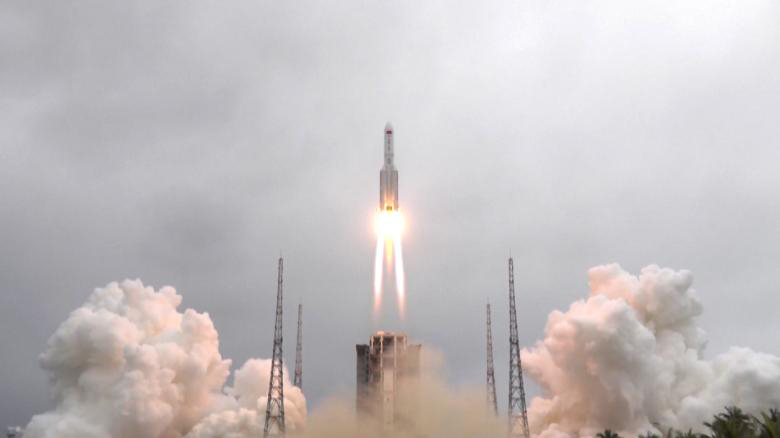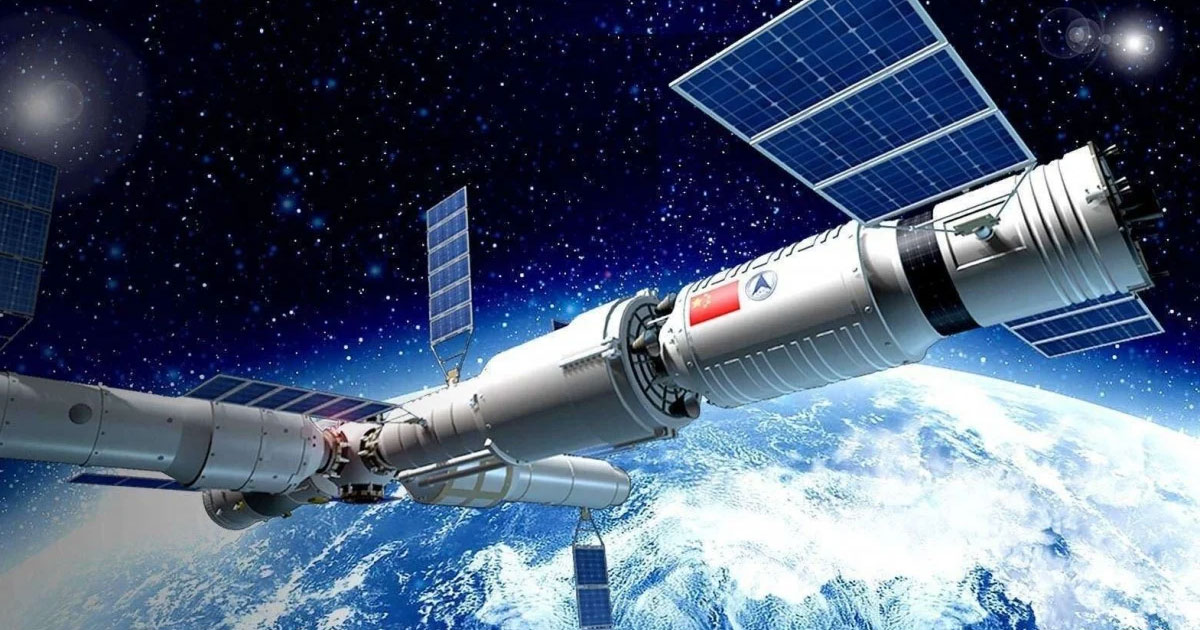Out Of Control Chinese Rocket Threatens Over 20 Countries

In the last hours the international community has learned that a Chinese rocket is out of control and it’s expected to make land by Saturday May 8th anywhere in a vast area of the planet. On April 29th, the Chinese Long March-5B rocket takes off from Wenchang Space Launch Center in southern China’s Hainan province, which carries Tianhe, the core module of China’s space station, and it’s now reportedly out of control and is set to re-enter Earth’s atmosphere this weekend, around May 8, according to the US Department of Defense.
The first module of China’s “Heavenly Palace” space station was launched on Thursday, April 29, considered a new milestone for Beijing’s ambitious plan to create a permanent human presence in space. A billion dollars was invested by China for space exploration in order to reflect its technological power and rising global stature, following the footsteps of the United States, Europe, and Russia.
As part of the congratulatory message of Chinese President Xi Jinping, he called the space station a key step in “building a great nation of science and technology”.
The Tiangong space station is expected to be operational by 2022, which is part of the 11 planned missions of China’s space station. With the retirement of the ISS or The International Space Station — a collaboration between the United States, Canada, Russia, Japan, and Europe, China’s space station Tiangong could become the only space station in Earth’s orbit.
On Tuesday, the core was orbiting Earth every 90 minutes at a speed of around 27,600 kilometers per hour and at a height of more than 300 kilometers. It has dropped nearly 80 kilometers in altitude since the weekend, and according to SpaceNews, amateur ground observations showed it was tumbling and was out of control.
An astrophysicist named Jonathan McDowell explained that there are no more than 10 tonnes left in the orbit to re-enter Earth uncontrollably, and Tianhe is 22 tonnes in weight. The rocket has a diameter of five meters and a length of 32 meters. It also has large rocket engines on one end, despite being mostly an empty tank. Long, thin metal rods that were once part of the fuel delivery system can be found inside. Given its speed, even a minor change in its path could have a significant impact on where it ends up.
They said that because of the Chinese rocket’s speed, they can’t really pinpoint its exact entry to Earth until within a few hours of reentry. But according to Andrew Jones, a journalist for SpaceNews, the rocket body’s orbit takes a little far north as Madrid, New York, and Beijing, and as far south as Wellington New Zealand, and southern Chile, and has the potential to land anywhere within this range.
Though Jonathan McDowell also mentioned that despite the threat, there’s also a possibility that the rocket will splash in an isolated area or in one of the world’s oceans, which means that there’s only a small risk that it will cause damage or hit someone. Also, according to McDowell, experts could predict its landing time within a six-hour window once it became clear when the rocket would return to Earth. (Its path can be seen and tracked on websites such as orbit.ing-now.com.)
The United States Space Command was tracking the rocket’s location, and they are expecting the rocket to re-enter Earth by around May 8, according to the Defense Department. However, they can only give a warning within one to two hours before it lands. Also, starting last May 4, the 18th Space Squadron in California provided updates on the rocket’s location.
Even though the Chinese government doesn’t want to provide any comments yet regarding the expected re-entering of their Long March-5B rocket, the White House stated that the US wants to work with the International community as they are committed to addressing the risks of space debris-related congestion. In addition to that, China’s own space monitoring network will keep a close eye on areas under the rocket’s flight path and take precautions to avoid causing damage to passing ships.
The Pentagon monitoring Chinese rocket:
The Pentagon has announced that it is monitoring a massive Chinese rocket that has lost control and is expected to reenter Earth’s atmosphere this weekend, raising questions about where its rests will land.
This event puts in high alert several countries, this is not “not the end of days” kind of situation, according to Jonathan McDowell, an astrophysicist at the Astrophysics Center at Harvard University, “I don’t think people should take precautions. The risk that there will be some damage or that it would hit someone is pretty small — not negligible, it could happen — but the risk that it will hit you is incredibly tiny. And so I would not lose one second of sleep over this on a personal threat basis,” he said.
Although new updates are being announced by the hour, many governments are keeping their eyes very open if by any chance the Chinese rocket were to touch land in a populated area, they will only have a few hours to get prepared and evacuate the population. We all hope that this situation doesn’t happen and everything ends up being just a little scare.




